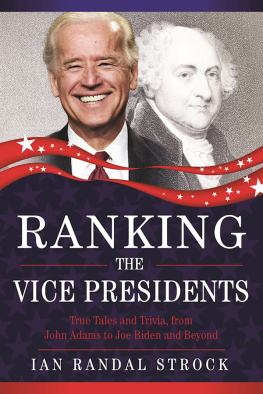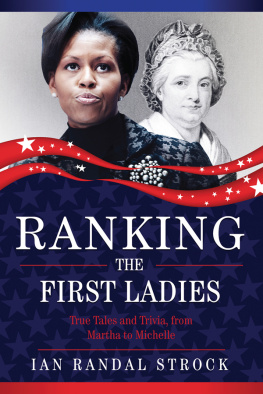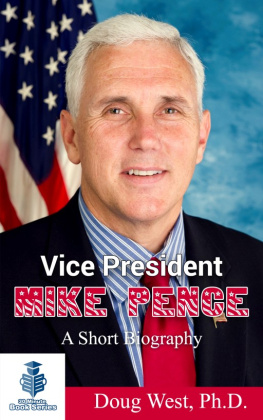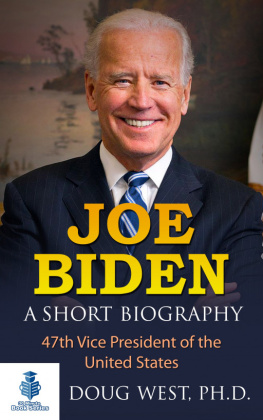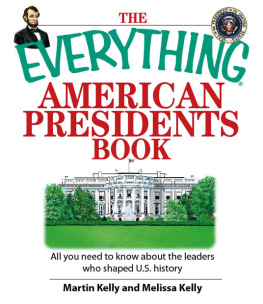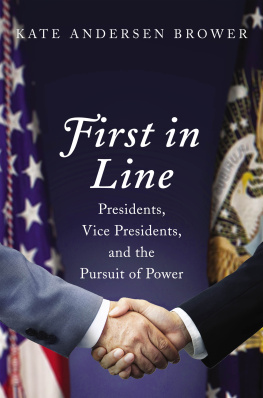Copyright 2016 by Ian Randal Strock
All rights reserved. No part of this book may be reproduced in any manner without the express written consent of the publisher, except in the case of brief excerpts in critical reviews or articles. All inquiries should be addressed to Carrel Books, 307 West 36th Street, 11th Floor, New York, NY 10018.
Carrel Books books may be purchased in bulk at special discounts for sales promotion, corporate gifts, fund-raising, or educational purposes. Special editions can also be created to specifications. For details, contact the Special Sales Department, Carrel Books, 307 West 36th Street, 11th Floor, New York, NY 10018 or .
Carrel Books is a registered trademark of Skyhorse Publishing, Inc., a Delaware corporation.
Visit our website at www.carrelbooks.com.
10 9 8 7 6 5 4 3 2 1
Library of Congress Cataloging-in-Publication Data is available on file.
Cover design by Rain Saukas
Print ISBN: 978-1-63144-059-5
Ebook ISBN: 978-1-63144-061-8
Printed in the United States of America
For Dad.
CONTENTS
INTRODUCTION
W hen I was little, my mother hung a poster in the house, showing the Presidents faces, names, and dates of office. I memorized it.
Soon after that, President Nixon announced his resignation, and my first political memory is asking my parents if that meant that Henry Kissinger would be President, because his was the only other name I knew. My parents explained to me about the Vice Presidency and that Gerald Ford was the new President.
Then I learned more about the Presidents and Vice Presidentswho they were, what they did, how they came to have those jobsand I developed more and more of an interest in them. I began looking for commonalities, connections between the men whod been President or Vice President, looking for patterns and signs. What characteristics did they share? What facets of their lives pointed toward their eventual elections? Could I calculate all the numbers to predict who would become the next President? Could I use the information I gathered to figure out whom theyd pick to be their running mates? Was there any chance I could earn those posts myself?
As it turns out, the answers are equivocal. Using those numbers, I was able to predict Barack Obamas election over John McCain and then his reelection over Mitt Romney. But I did not share those commonalities the Presidents seemed to have, so my odds of getting there are very long indeed.
While I was turning this lifelong interest in the Presidents into my first book ( The Presidential Book of Lists , which Random House/Villard published before the election of 2008), I was also looking into the Vice Presidents, 14 of whom went on to serve as President. And I found the Vice Presidents to be no less interesting, individually or collectively.
Thus, I am pleased to present this book, originally conceived as a companion to my first, but definitely able to stand on its own. The Vice Presidents are a much more varied lot, and I hope youll find them as fascinating as I do.
The Vice Presidents
T he post of the Vice President of the United States is defined in Article II, Section 1 of the Constitution. Other than being available to succeed to the Presidency if necessary, the Vice Presidents sole Constitutional duty is spelled out in Article I, Section 3 (The Vice President of the United States shall be President of the Senate, but shall have no Vote, unless they be equally divided.).
For the first four electionsbefore the rise of party politicswhoever came in second in the race for President was declared the Vice President. In the election of 1800, however, Presidential candidate Thomas Jefferson and Vice Presidential candidate Aaron Burr tied in the Electoral College, with 73 votes each, throwing the election to the House of Representatives and pointing out the need for what became the 12th Amendment, which provides for the election of the President and Vice President as a team.
The need for the White House, which was originally known as the Executive Mansion, was recognized when planning began for the capital city, during George Washingtons term. But the Vice President was on his own for living arrangements (as is every other appointed and elected official in the government). The Vice President didnt receive an official residence until 1974, when Congress authorized the transformation of Number One Observatory Circle and its refurbishment. The house was built in 1893 for the superintendent of the US Naval Observatory and taken over by the Chief of Naval Operations in 1923.
Nelson Rockefeller, the Vice President at the time, already had a home in Washington and wasnt interested in moving into the new official residence, but he used it for entertaining. Walter Mondale was the first Vice President to live there.
Note on Usage
W hen its appropriate to list the Vice Presidents by merely their last names, most of them are unique and present no problem. But there are several names shared by Vice Presidents or that Vice Presidents share with Presidents. In those cases, this book uses the following style: GClinton means George Clinton (who was Vice President from 1805 to 1812); BClinton is Bill Clinton (President, 19932001); RMJohnson is Richard M. Johnson (Vice President, 183741); AJohnson is Andrew Johnson (Vice President, 1865; President, 18651869); LBJohnson is Lyndon Baines Johnson (Vice President, 196163; President, 196369); HWilson is Henry Wilson (Vice President, 187375); and WWilson is Woodrow Wilson (President, 191321).
The term First Lady didnt come into widespread use until the late 1800s, and even into the early 1900s, its use was not universal. While its generally used today to mean the Presidents wife, in point of fact, the government recognizes the term as referring to whoever serves as the official White House hostess. In this book and Ranking the First Ladies , however, Ive slightly modified the definition for simplicitys sake: in these pages, First Lady means any woman who was married to a President before, during, or after his term of office. Ive also backdated the usage of the term to the beginning of the republic. Similarly, the term Second Lady, in this book, refers to any Vice Presidents wife, whether they were married during his term of office or not.
In researching this book and its predecessor, I discovered that there are several methods of determining how closely two people are related. Ive decided to use the method advocated by the National Genealogical Society, which seems the most common. In this system, to determine what degree of cousins two people are, count generations back to the common ancestor from each of the two people being compared. Using the person most closely related to the common ancestor, the degree of cousinhood (first, second, etc.) is one less than the number of generations between them. The degree of removedness (once removed, twice removed, etc.) is the number of generations difference between the two people being compared.

For example, James Madison and Zachary Taylor shared a pair of great-grandparents, Col. James Taylor and Martha Thompson. Their daughter Frances was President Madisons grandmother, while their son Zachary was President Taylors grandfather. So we use the box on the left side for great-grandchild (James Madison) and the box at the top for great-grandchild (Zachary Taylor), and where those lines intersect, we see that they are second cousins. If, for another example, the common ancestors had been Zachary Taylors great-great-grandparents, we would use that line on the top to find that the two Presidents were second cousins, once removed.

